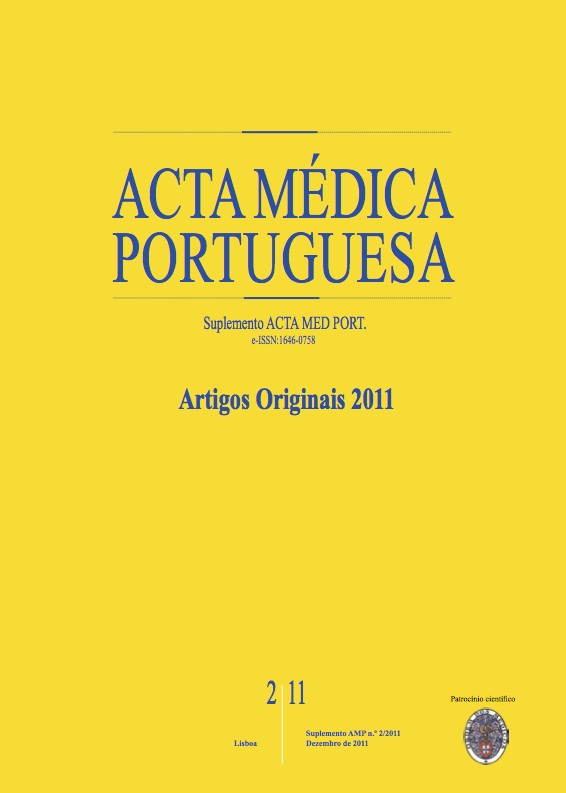Growth hormone treatment in childhood cancer survivors.
DOI:
https://doi.org/10.20344/amp.1476Abstract
Growth hormone (GH) deficiency is one of the most frequent endocrine problems occurring in cancer survivors, particularly when there is a previous history of central nervous system (CNS) tumour and submission to radiotherapy (RT). Material andWe retrospectively assessed pediatric cancer survivors with GH deficiency, submitted to GH treatment from 1988 to 2010 in a tertiary level hospital. We analised the following data: sex, age, oncologic diagnosis, oncologic treatment, auxology, Tanner puberty stage, final height, target height and other associated endocrine problems. We determined the height z-score difference between the beginning and the end of GH treatment (for patients who ended treatment), and between the beginning of GH treatment and the last observation (for patients who are currently on treatment), which was defined as the dependent variable. SPSS® version 17.0 was used for statistical analysis.A sample of 18 patients was obtained, 12 male, with a median age of cancer diagnosis of six years old. The diagnostics were CNS tumors (n=15) and hematologic neoplasia (n=3). Cancer treatment modalities were craniospinal RT (n=9), cranial RT (n=4), chemotherapy (n=14) and CNS surgery (n=15). The median of time between cancer treatment and beginning of GH treatment was 4 years and 8 months. Height z-score difference was positive in 12 patients. Statistical significant differences between medians and centiles of height z-score difference occurred in patients submitted to craniospinal RT (-0.08), cranial RT (0.59) and no RT (1.56) (p=0.003, IC 95%). The biggest differences between final height and target height (-10 and -11.5 cm) occurred in two patients submitted to craniospinal RT, with associated precocious puberty.Our results are consistent with previous studies, which point to a lesser efficacy of GH treatment when there is a past history of RT, namely craniospinal RT, and in association with precocious puberty.Downloads
Downloads
How to Cite
Issue
Section
License
All the articles published in the AMP are open access and comply with the requirements of funding agencies or academic institutions. The AMP is governed by the terms of the Creative Commons ‘Attribution – Non-Commercial Use - (CC-BY-NC)’ license, regarding the use by third parties.
It is the author’s responsibility to obtain approval for the reproduction of figures, tables, etc. from other publications.
Upon acceptance of an article for publication, the authors will be asked to complete the ICMJE “Copyright Liability and Copyright Sharing Statement “(http://www.actamedicaportuguesa.com/info/AMP-NormasPublicacao.pdf) and the “Declaration of Potential Conflicts of Interest” (http:// www.icmje.org/conflicts-of-interest). An e-mail will be sent to the corresponding author to acknowledge receipt of the manuscript.
After publication, the authors are authorised to make their articles available in repositories of their institutions of origin, as long as they always mention where they were published and according to the Creative Commons license.









